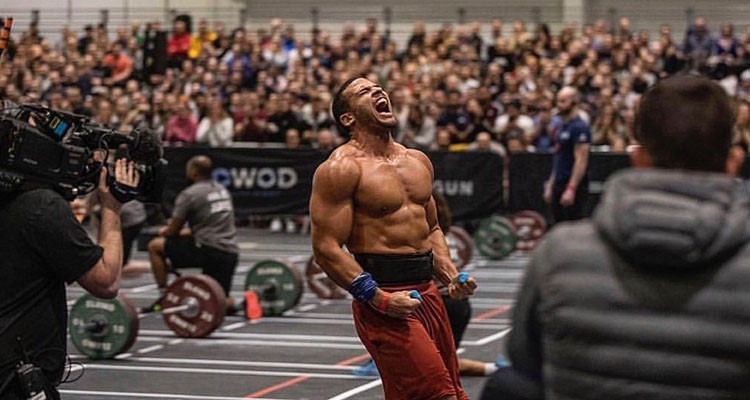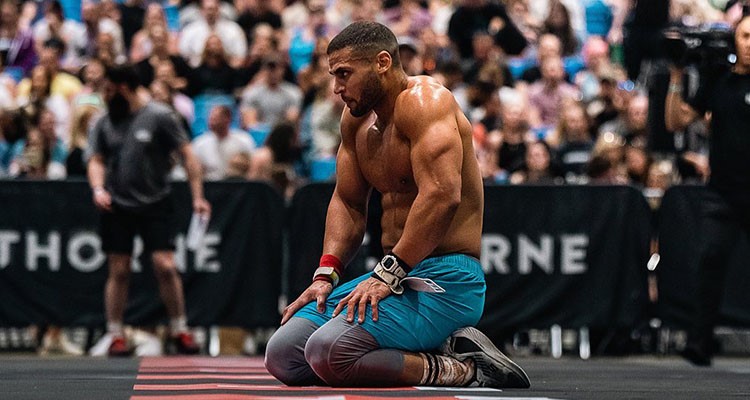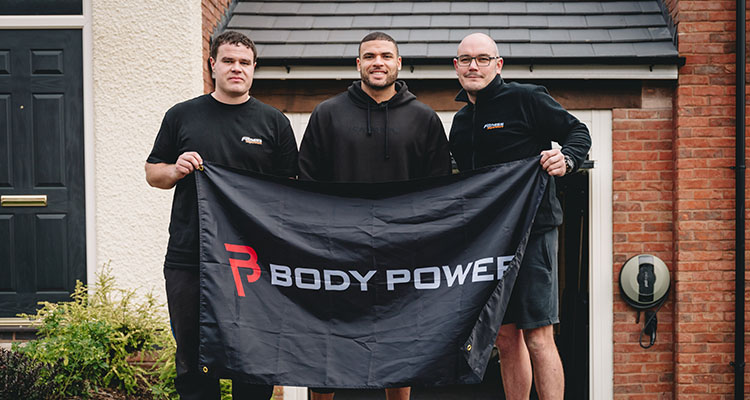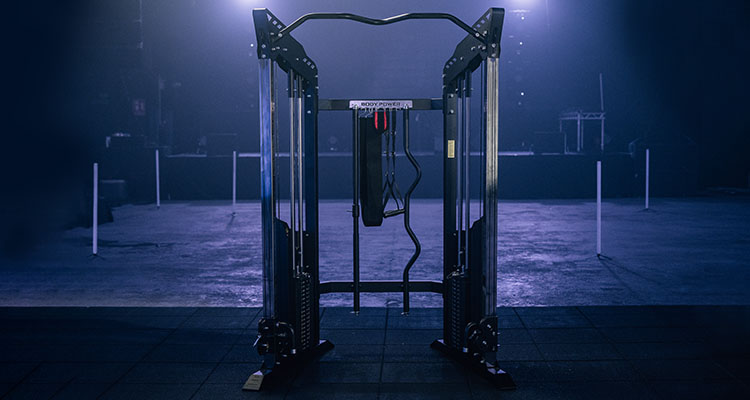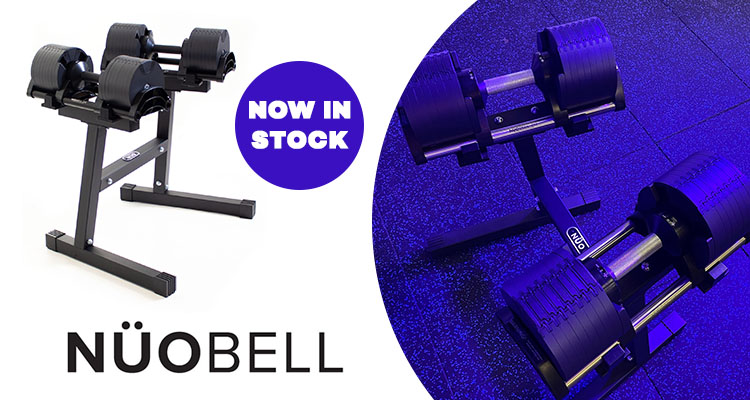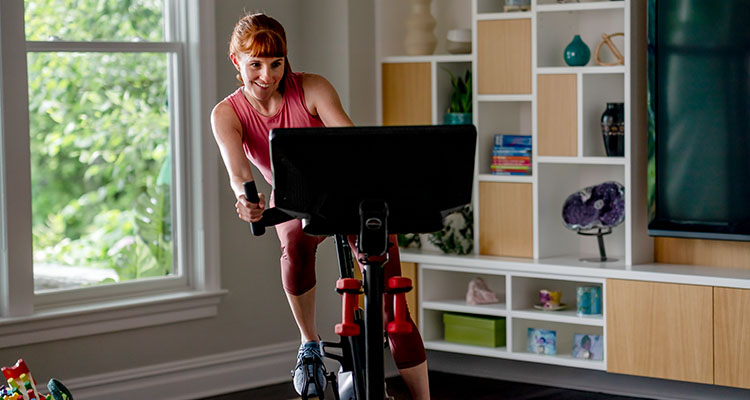Dumbbells or Barbells – what’s best for your training?
Now there’s no denying that free weights are the way to go if you’re after a quality strength session. But there’s an ongoing argument among lifters as to what tool is the best muscle-builder out there: dumbbells or barbells? Both are exceptionally effective at adding value to your workouts, and it’s certainly worth using them both during your training, but when should you choose one over the other?
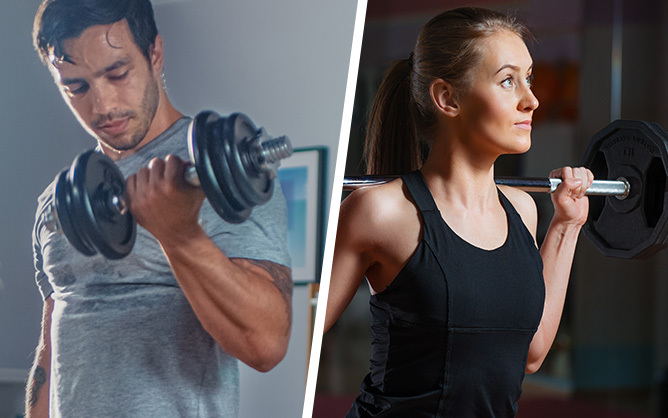
Why Choose Dumbbells Over a Barbell?
What benefit does the dumbbell hold over the barbell? Isolateral movement.
With dumbbells, you can still move either side of your body independent of the other. This means you’re not forced into a fixed position, as you are with a barbell, meaning you can adjust to make the movement as natural and comfortable as possible.
What’s more, dumbbells can often be a safer option for most than a barbell too. If the move becomes too heavy, you can just drop the weights to the floor, as opposed to being stuck underneath a bar.
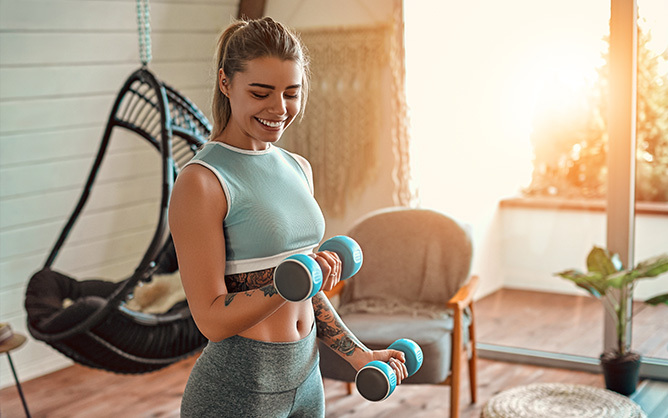
Types of Dumbbells
At its most basic, there are two types of dumbbells: fixed dumbbells and adjustable dumbbells.
Fixed dumbbells are those commonly found in commercial gyms, usually ranging in weights from 0.5kg to 50kg or higher. These dumbbells boast a one-piece design, manufactured from cast iron with round or hexagonal heads that are covered in a protective material like rubber or urethane.
Adjustable dumbbells are, as the name suggests, not a fixed weight, and can be adjusted to your needs. These come in the form of a handle with removable plates, or as selectable dumbbells (like the popular Bowflex SelectTech) which are easily adjusted by simply turning a dial. Replacing a range of dumbbells in just one pair, adjustable dumbbells are an excellent space-saving option for home gyms.
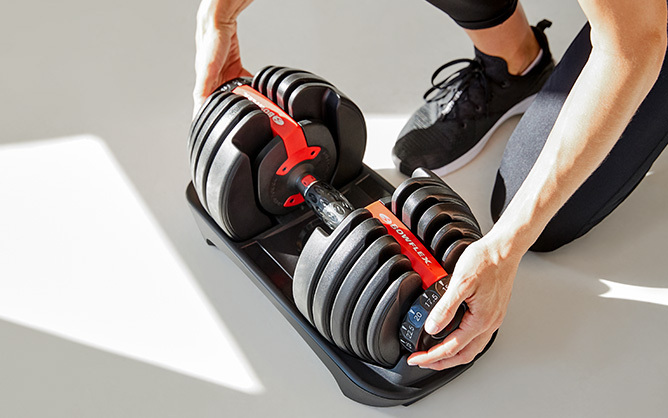
Essential Exercises with Dumbbells
So, which exercises should have you reaching for the dumbbells?
Walking Lunges
Keeping the dumbbells down by your side, step forward and lower your back knee as close to the ground as possible. Then, push up through the front leg to return to a standing position, before repeating with the opposite leg.
Biceps Curl
Holding a pair of dumbbells in front of your thighs with your palms facing out. Slowly curl both dumbbells up towards your collar bone, then back.
Triceps Kick-Back
Place one knee, shin and foot on a bench (or any available flat surface) then lean forward so your body is parallel to the floor. Holding the dumbbell, bring your upper arm up to 90°, then hinge at the elbow to straighten your arm out behind you. Guide the weight until your arm is straight, then lower it back to 90°.
Farmer’s Walk
Holding heavy dumbbells in each hand, walk for a set distance or time, keeping your core tight and upright.
Why Choose a Barbell Over Dumbbells?
Want to lift heavy? That’s where the barbell excels.
The comes a point during your progression where dumbbells just aren’t ideal for certain exercises anymore. The effort involved in getting heavier dumbbells into position can feel like an exercise in itself!
With the barbell often starting off in a rack or floor at the ideal starting position, you don’t need to waste any energy before you hit that first rep.
A barbell is also particularly handy when it comes to progressive overload. When you’re going for a new PB, moving up in small increments can make a big difference, increments only offered by a barbell and weight plates.
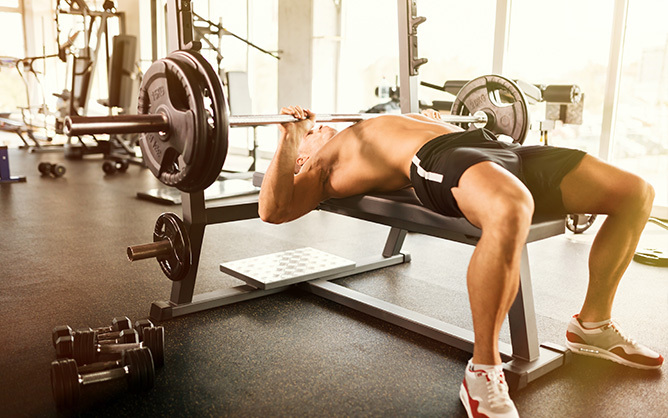
Types of Barbells
Standard Barbells
Recommended for beginners or non-advanced weight lifters, a Standard Barbell holds up to around 120kg, and is only compatible with Standard 1” Weight Plates.
Olympic Barbells
Olympic Bars can withstand a huge maximum load of up to 750kg. Although they may bend under a heavy load, they usually have a high tensile strength and will return to normal. They are only compatible with 2” Olympic Weight Plates, which are available in heavier sizes (up to 50kg!).
Studio Barbells
Often the smallest barbell, Studio Bars are designed to accommodate Studio Weight Plates only. You’ll commonly find these bars in studio and group exercise classes, and are ideal for lifting lighter weights, with more reps.
Essential Exercises with Barbells
Choose the barbell for these popular exercises:
Bench Press
Unrack the loaded bar, and start with your arms locked above you. Slowly lower the bar to your chest, bending your elbows as you do, then press the weight back up to the starting position.
Bent Over Row
Grip the bar at shoulder-width. Bend your knees slightly, then your hips until your upper body is at a 45° angle. Pull the bar up to your stomach, then back for one rep.
Deadlift
With the bar on the floor, hinge at your hips and lower down, with a bend in your knees, to grab the bar. Drive your hips forward to lift the bar, keeping your core braced and back flat. Lower the bar back to the ground and repeat.
Power Clean
With the bar on the floor, grip the bar at shoulder-width. Lift the bar then, as it passes your knees, explosively power it up to your chest. Catch it here, before lowering the bar for the next rep.
So, what have we learnt?
Barbells or dumbbells - what’s best for your training? Answer: it depends.
It depends on what exercise you’re doing, it depends on how much you’re lifting, and it also depends on your personal preference. What’s clear though, is that using both barbells and dumbbells in your training is the most beneficial way to maximise your sessions.
New to strength training and not sure where to begin? Head to your nearest store and our sales advisors will help your pick out the best products to help you hit your goals from home!



